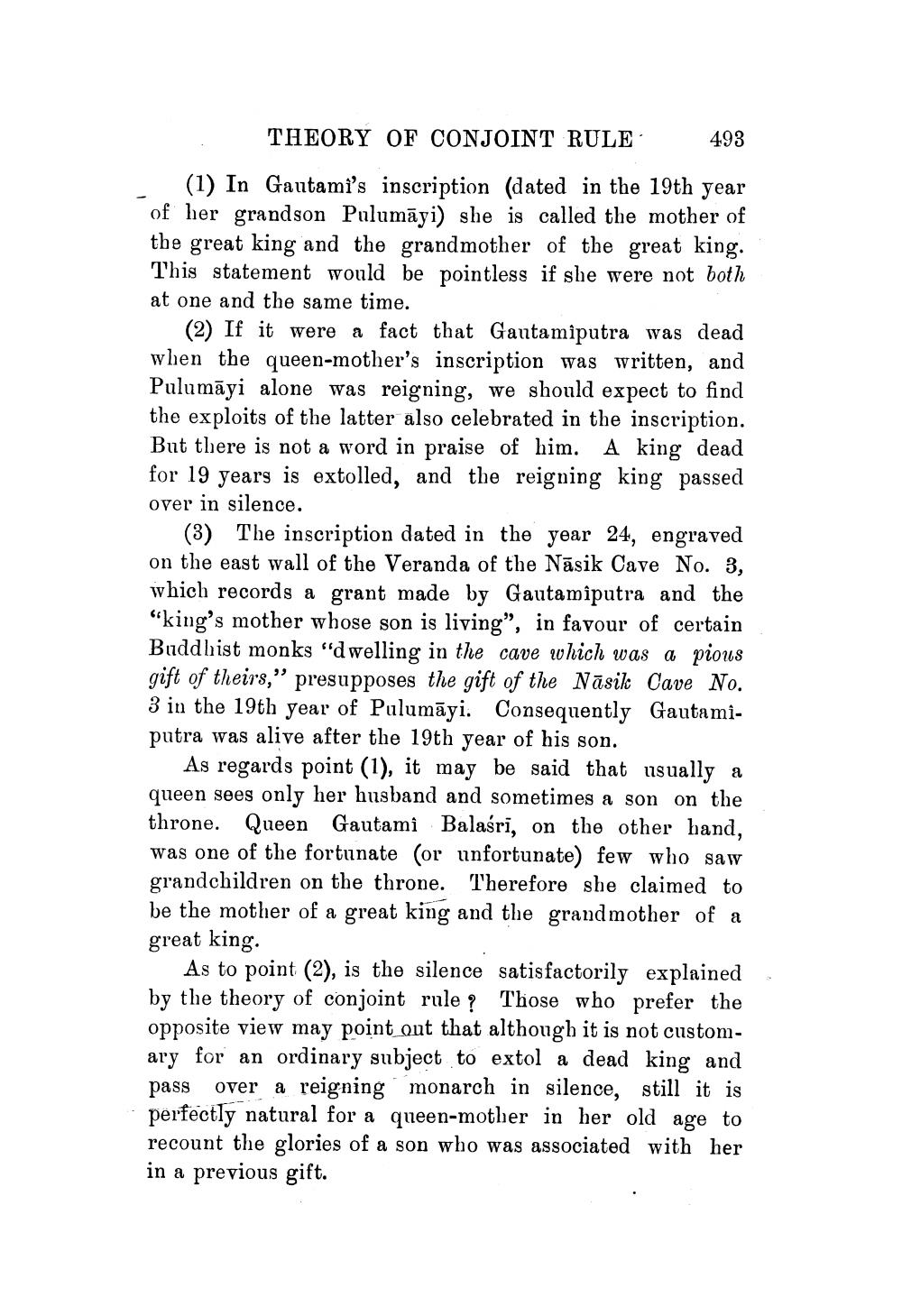________________
THEORY OF CONJOINT RULE
(1) In Gautami's inscription (dated in the 19th year of her grandson Pulumayi) she is called the mother of the great king and the grandmother of the great king. This statement would be pointless if she were not both at one and the same time.
493
(2) If it were a fact that Gautamiputra was dead when the queen-mother's inscription was written, and Pulumayi alone was reigning, we should expect to find the exploits of the latter also celebrated in the inscription. But there is not a word in praise of him. A king dead for 19 years is extolled, and the reigning king passed over in silence.
(3) The inscription dated in the year 24, engraved on the east wall of the Veranda of the Nasik Cave No. 3, which records a grant made by Gautamiputra and the "king's mother whose son is living", in favour of certain Buddhist monks "dwelling in the cave which was a pious gift of theirs," presupposes the gift of the Nasik Cave No. 3 in the 19th year of Pulumayi. Consequently Gautamiputra was alive after the 19th year of his son.
As regards point (1), it may be said that usually a queen sees only her husband and sometimes a son on the throne. Queen Gautami Balaśrī, on the other hand, was one of the fortunate (or unfortunate) few who saw grandchildren on the throne. Therefore she claimed to be the mother of a great king and the grandmother of a great king.
As to point (2), is the silence satisfactorily explained by the theory of conjoint rule? Those who prefer the opposite view may point out that although it is not customary for an ordinary subject to extol a dead king and pass over a reigning monarch in silence, still it is perfectly natural for a queen-mother in her old age to recount the glories of a son who was associated with her in a previous gift.




